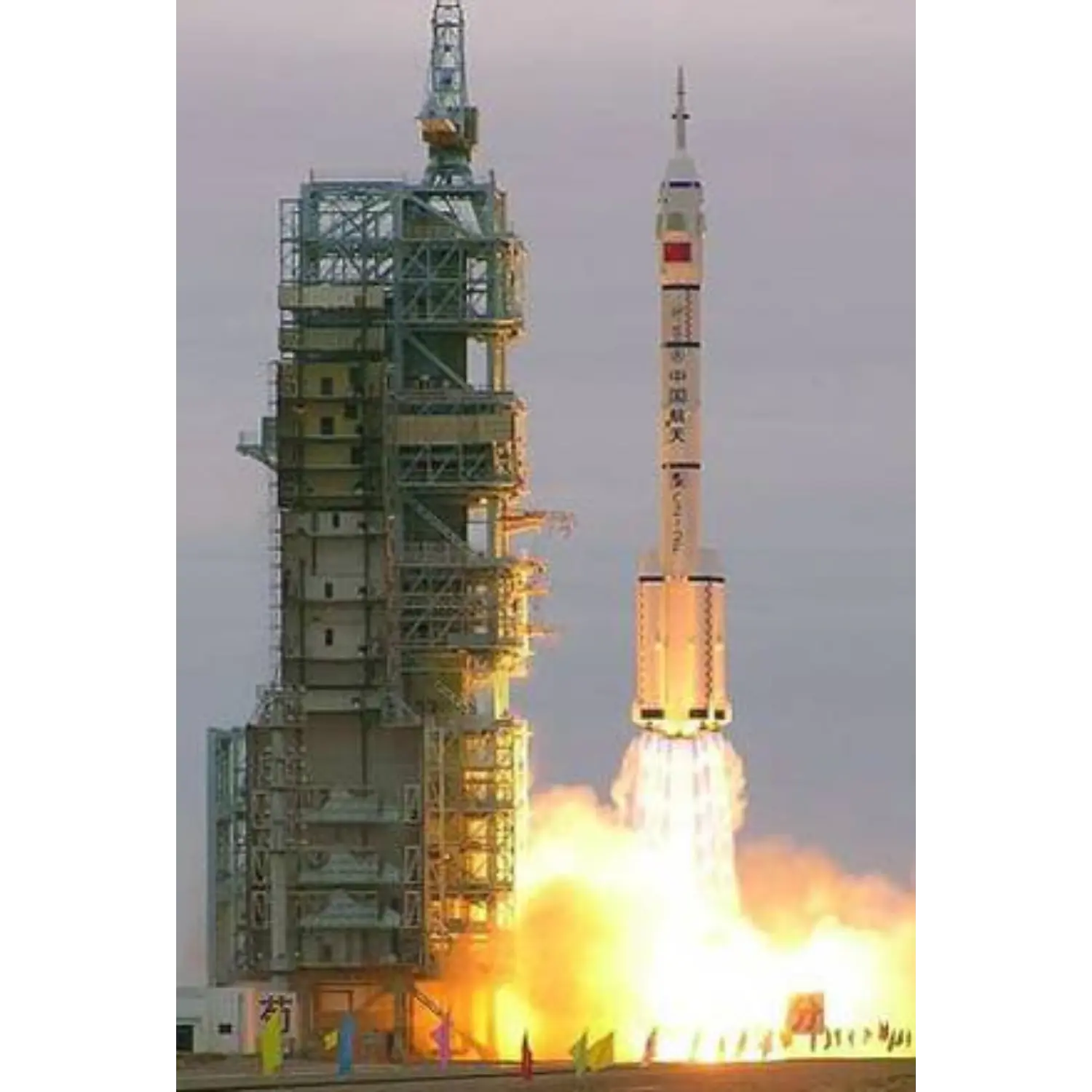/
Shenzhou 5
Launch Success
Liftoff Time (GMT)
01:00:03
Wednesday October 15, 2003
Mission Details
Launch Notes
China becomes the third country to be able to launch humans to orbit, after the USSR/Russia, and the USA. Yang Liwei becomes the first Chinese person in space.
Shenzhou 5
Shenzhou 5 (Chinese: 神舟五号) was the first human spaceflight mission of the Chinese space program. There had been four previous flights of uncrewed Shenzhou missions since 1999. China became the third country in the world to have independent human spaceflight capability after the Soviet Union and the United States. Shenzhou 5 was launched from Jiuquan Satellite Launch Center, entering orbit 343 km above Earth at 09:10 (UTC +8) with taikonaut Yang Liwei (杨利伟), a 38-year-old Lieutenant Colonel in the People's Liberation Army and former fighter pilot. The Shenzhou spacecraft made 14 orbits and landed 21 hours after launch. It re-entered Earth's atmosphere at 06:04 (UTC +8) on October 16, 2003 (22:04 UTC 15 Oct 2003), its parachute opened normally and the taikonaut said he was feeling fine. The landing happened at 06:28 (UTC +8), just 4.8 kilometers from the planned landing site in Inner Mongolia, according to the government. The orbital module of the spacecraft stayed in orbit; it continued with automated experiments until March 16, 2004, and decayed on May 30. Yang emerged from the capsule about 15 minutes later and waved to members of the recovery team. The control center in Beijing later declared China's first crewed spacecraft mission to be successful after Yang Liwei emerged from his capsule.
Low Earth Orbit
1 Payload
7,790 kilograms
Rocket


Agency
CASCRocket
Height: 58.34m
Payload to Orbit
LEO: 8,400 kg
GTO: 0 kg
Liftoff Thrust
5,985 Kilonewtons
Fairing
Diameter: 3.6m
Height: 19.11m
Stages
2
Strap-ons
4
Launch Site
Stats
Long March 2F
5th
Mission
1st
Mission of 2003
2003
46th
Orbital launch attempt